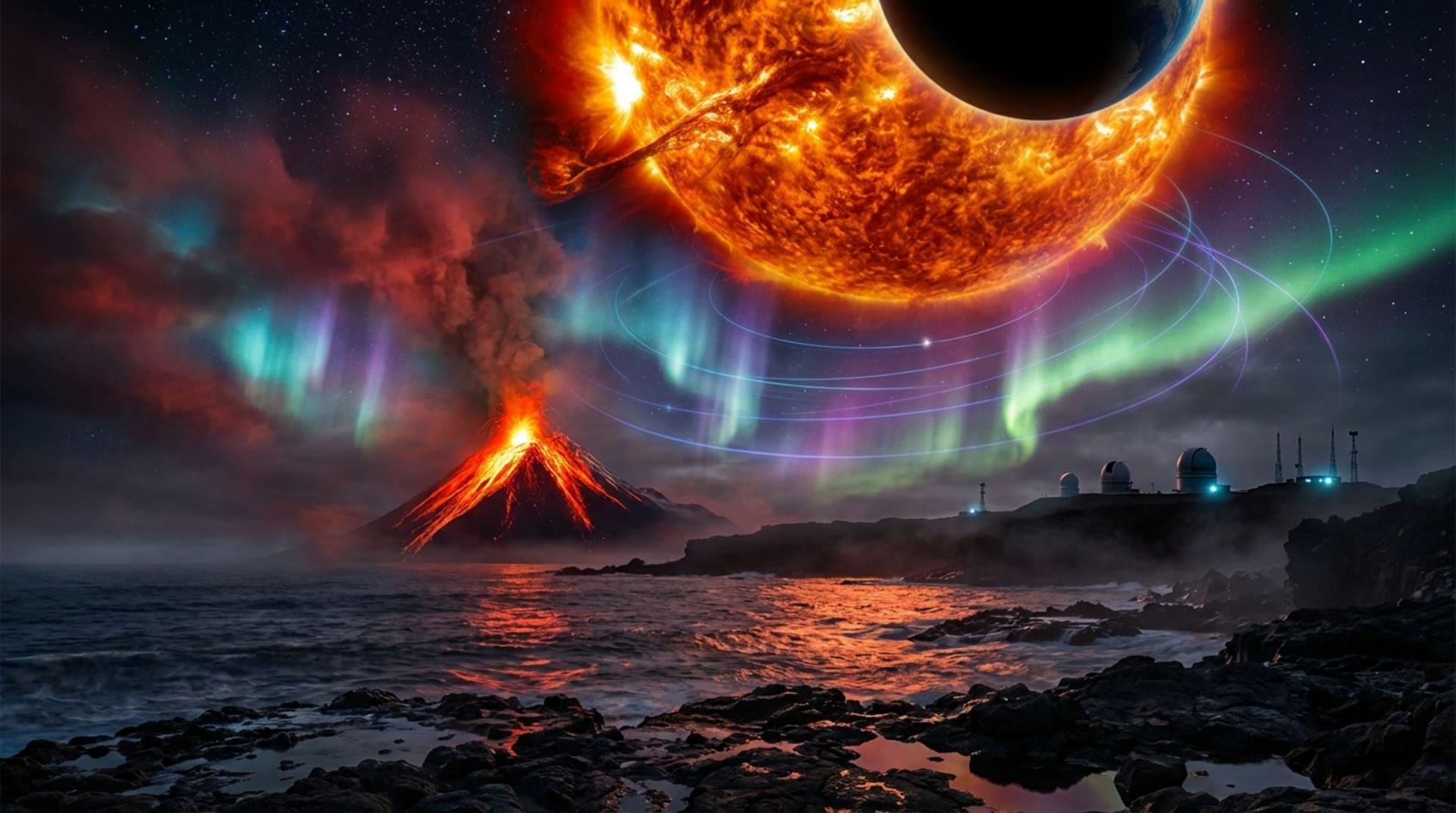Key Takeaways
- Researchers and independent observers report an apparent uptick in volcanic unrest following intense solar activity in 2023–2025, but causation remains unproven.
- Peer-reviewed analyses report a strong statistical correlation (~0.84) between global eruption frequency and the solar background magnetic field across multiple solar cycles, and a pronounced ~22-year periodicity that aligns with the Sun’s Hale magnetic cycle.
- Major agencies (NASA, USGS, Smithsonian) acknowledge historical periodicities and document ongoing eruptions, yet treat solar-trigger hypotheses as speculative pending clear physical mechanisms and reproducible tests.
Reading the Pattern Hunters
In recent years some independent researchers and online communities have pointed to coincident timing between large solar events (flares, geomagnetic storms) and clusters of volcanic unrest. They combine solar indices, magnetograms, and volcanic catalogs to identify rhythms and short-term upticks. These observers emphasize correlations, the recurrence of peaks during particular solar magnetic phases, and anecdotal clustering of eruptions across different regions after energetic solar episodes.
What the Data Shows
Long-term studies find notable statistical signals: a ~0.84 correlation between eruption frequency and the solar background magnetic field over 11 solar cycles since the late 19th century, a clear ~22-year periodicity consistent with the solar magnetic (Hale) cycle, and weaker ~11- and ~80-year components in large-eruption records. Contemporary catalogs (Smithsonian Global Volcanism Program, USGS) confirm multiple active sites through mid-2025. Separately, the 2022–2023 global temperature anomaly (reported around +0.29 ± 0.04 K in some analyses) has been attributed primarily to ENSO and other climate factors rather than volcanism.
Official Perspective
NASA and USGS acknowledge that statistical periodicities exist in eruptive records but caution that correlation is not causation. Proposed mechanisms—geomagnetically induced stresses, magnetically driven crustal currents, or atmospheric changes that alter surface loading on magma systems—are physically plausible in principle but lack decisive empirical support. Operational monitoring remains focused on ground-based signals: seismicity, deformation, gas emissions, and local geologic context.
Hypotheses Under Discussion
Suggested links include:
- Electromagnetic induction: rapid solar-driven magnetic field changes could induce weak currents and stresses in conductive crustal regions.
- Atmospheric forcing: solar-modulated circulation changes (or ties to ENSO) altering surface pressure and hydrologic loads on volcanic systems.
- Tidal and resonance effects: subtle modulation of existing marginally stable magma reservoirs responding to small external stress swings.
None of these has reached consensus; they remain testable ideas that require targeted experiments, refined statistical controls, and mechanistic monitoring at candidate volcanoes.
Where Things Stand
The robust statistical signals encourage further research, but existing records do not demonstrate direct, reproducible triggering by solar events for individual eruptions. The situation in 2023–2025—multiple simultaneous eruptions and active sites worldwide—is consistent with both normal variability and patterns expected under long-term solar-modulated rhythms. Distinguishing those possibilities requires coordinated studies combining solar indices, high-resolution volcanic monitoring, and laboratory or modeling work on plausible coupling mechanisms.
Frequently Asked Questions
Not yet. Strong statistical correlations and periodicities exist in long-term records, but agencies and most volcanologists regard a direct causal link as unproven until mechanisms are confirmed and predictions can be validated.
Current evidence does not allow confident prediction of a global surge triggered by solar events. Monitoring continues, and localized responses at particularly sensitive systems remain a research hypothesis rather than an operational forecast.
Convincing evidence would link specific, time-constrained solar perturbations to reproducible changes in subsurface stress or magma behavior at monitored volcanoes, demonstrated repeatedly and explained by a physical model that passes independent tests.




